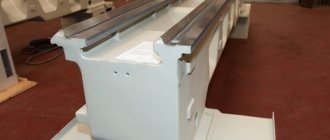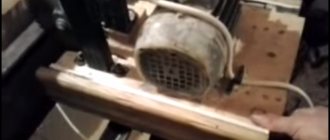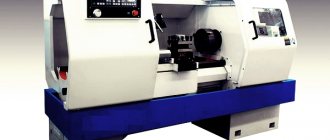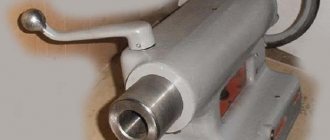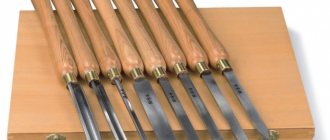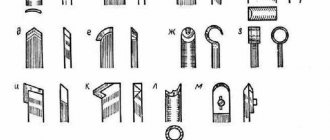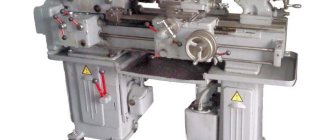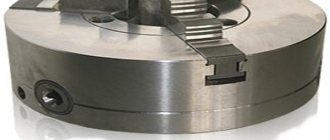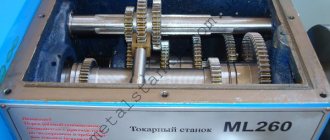All children dream of becoming someone from early childhood. Some want to be pilots, others - astronauts, and others - TV presenters. However, in addition to such grandiose plans for the future, there are also smaller aspirations, for example, helping parents around the house, participating in school events, and completing creative tasks. The latter, as a rule, includes needlework: girls learn to sew and knit, and boys begin to work with various tools and learn the basics of repairing and making new products. When the first steps in this matter are mastered, the boys want to begin more complex tasks, therefore, finding themselves in the school technology room, they immediately become eager to stand at some machine and make something with its help. As a rule, a technology teacher teaches how to work with a drilling machine, then with a lathe. These are more serious devices that deserve special attention.
Types of lathes
A little theory about lathes. It will be useful to know about their main types, since a general understanding of these devices can broaden one’s horizons, increase the amount of knowledge in this area, and this, in turn, will allow operations to be carried out more boldly during work (it’s how it works: the more we know, the more We feel more confident).
- Screw cutting machine. Designed for processing metals (ferrous or non-ferrous), making cones and various types of threads from them.
- Revolving machine. It also has the purpose of manufacturing parts from metals. Works with calibrated rods, which are long metal sticks that can be processed.
- Carousel machine. Helpful when you need to work on large workpieces.
- Multi-cutting machine. It is very good to use for mass or serial production of parts, mechanisms, devices. They provide the ability to process a workpiece with several cutters at once.
- Machines with manual, foot and electric drive. The first two set the workpiece in motion by hand or foot, respectively. Such machines are well suited where there is no power supply. In the latter, the product is rotated by a motor that operates by supplying current to it.
There is also a classification of machines according to the material they can work with. Depending on this, these devices are divided into lathes for metal and wood. Today we’ll talk about the latter type, since in practice it is used most often in school and at home.
Wood lathe: device and purpose
A wood lathe is a device powered by electricity and designed to process wooden workpieces in the form of a body of revolution. It allows you to actually sharpen the material, cut it, and also sand it with sandpaper.
These operations are performed using a special tool - a chisel. This is a hand tool that consists of a wooden or plastic handle with a sharp metal tip, which can have different shapes. Using the chisel blade, unnecessary material is removed from the workpiece, and due to this, a product of the desired type with the correct design is obtained.
The process of processing the product itself is carried out by combining two types of movement: rotational (comes from the workpiece itself using a lathe) and translational (comes from a chisel, regulated by the worker).
Main components
The wood turning machine consists of:
- Beds (the basis for placing the necessary mechanisms and elements).
- Drive chuck (headstock). Responsible for rotating the workpiece.
- Rotating spindle. Adjusts the rotation speed.
- Tailstock. Provides fixation of the part.
- Movable thrust bearing. Sets the optimal distance to the workpiece.
Lathes come in tabletop and bed-mounted types. The frames can be cast iron, stable and durable. There are lightweight cast aluminum frames. Their advantage is the complete absence of corrosion. A desktop (portable) lathe is cheaper. It can also be installed on a special workbench or stand. To do this, the housing must have appropriate mounting holes. A wood lathe can weigh from 18 kg to 90 kg.
What is boxwood How to make a carpentry workbench How to make a table from epoxy resin Impregnation against moisture and rotting
The higher the weight, the less vibration will be felt. It's comfortable. But for home craftsmen, buying large lathes is not profitable. You can get by with a mini machine. The machines also differ in phases. There are two options here - 220 V or 380 V. A single-phase machine is often purchased for the home. It all depends on the network you have. A three-phase lathe is generally more powerful. This is a productive stationary equipment, so it is not needed for rare private work around the house.
Homemade lathe.
The main criteria for choosing a lathe are power and accuracy of processing parts. If turning work is a hobby, then fundamental accuracy is not required. Of course, if the machine can perform fairly accurate work, then this is good. But the price of a functional and very accurate machine is higher.
Often craftsmen working at home take care of silent work. A low-power machine makes less noise. If you choose a lathe from famous and reliable brands, then the very powerful motor is also noise-proof. For more detailed information, we have prepared the most important technical characteristics of lathes. They directly indicate their working potential.
Table of size ranges (standard sizes) of universal wood lathes.
When choosing power, the main thing is to decide what you need the machine for. If for a hobby or “folk art” products, then buy an inexpensive household-grade lathe. These are mini machines. They are ideal for small-scale production. They begin counting their power indicators at 350 W and end at 500 W. For medium-volume work, you should choose a wood lathe with a power of 500 W-1000 W.
The power of a lathe is over 1000 W – this is already relevant for the large-scale industrial sector. Important recommendation: for professional work with heavy loads, choose more powerful machines. Then, when turning or drilling is set to maximum, you will not hear the engine slipping or a drop in speed. But if the motor is weak and does not pull the load, then this has a bad effect not only on the quality of work, but also on the service life of the engine.
Working at a lathe.
Classification of woodworking machines
Many types of equipment are used in the woodworking industry. The main characteristics by which classification is made are the technological process and design features. Technological features:
- Cutting;
- Gluing and assembly;
- Presses;
- Finishing;
- Dryers.
READ What is a clamp?
Equipment of different designs for performing the same operations may differ in operating technology.
- Processing 1 or many items;
- Number of threads;
- 1-axis or 4-axis;
- By the number of spindles;
- Along the trajectory of movement of the processed material;
- By the nature of the presentation.
- By cyclicality.
In addition to the universal lathe, there are several more specialized types of such equipment that are quite in demand in production.
- A screw lathe is designed for cutting threads on a wooden workpiece. In addition, this type of equipment usually processes cone-shaped parts.
- The turning and milling device is designed for the production of various grooves, their boring and subsequent processing.
- A desktop wood lathe is very common among home craftsmen and in educational institutions. Thanks to its light weight and dimensions, this device fits perfectly and is attached to the table top.
- CNC wood processing equipment. This is a separate direction of multifunctional woodworking machines. The main difference between CNC equipment and other types of lathes is their automatic operation, without human intervention.
Woodworking Machine.
Construction of a wood lathe STD 120
It's time to learn about the internal and external components of the device we are considering. It should be noted that the STD 120 model is the most common and is widely used in schools. Therefore, it will be useful to know both for the ordinary citizen and for the ordinary student the structure of a wood lathe. The description with the corresponding diagram-drawing is presented below:
- Belting. Its task is to transfer rotational motion from the electric motor to the spindle.
- Electric motor. Its purpose is that it must, using an electric current, generate rotational motion, which is then transmitted to the workpiece through a belt drive and spindle.
- Spindle. This is one of the parts of a wood lathe, which acts as a left-hand fastening for the workpiece. The spindle also closes the circuit for transmitting rotational motion from the electric motor to the workpiece.
- Headstock. It is designed to support the belt drive mechanism and spindle.
- Handyman. This part of the lathe serves as a support for the chisel while processing the product.
- Tailstock. This part is necessary for fixing workpieces of different lengths, and also acts as the right fastening of the product. It has a movable mechanism, thanks to which it can move along the bottom of the machine to the left and right. This allows the worker to insert short, medium or long workpieces into the machine for processing.
- Keypad. Here are the buttons to turn the lathe on and off.
The question arises: “Which device of a wood lathe is the most important?” In principle, all components are necessary for correct and safe operation, so a definite answer to this question cannot be given.
Wood turning tool
Most often, turning chisels are used for processing wood on machines. Compared to conventional chisels, turning chisels have longer handles, and their cutters are made only from high-quality tool steel. That is, the chisel consists of two parts - a handle and a metal blade mounted on it with a blade sharpened at a certain angle or a double-edged blade.
There are different types of chisels for different tasks. For a beginner in turning, in order to start working with wood, it is enough to learn how to use these two chisels:
Chisels for turning
- Reyer - this chisel has a semicircular blade, which is made of a thick plate; it is intended for rough turning of the workpiece;
- meisel - this type of chisel is intended for finishing the part; the blade is sharpened obliquely, on both sides.
Most of the other types of turning chisels are classified as shaped tools. They give the final appearance of a turned part. For example, decorative grooves can be cut out on a turned salt shaker. Here are some types of such chisels:
- chisel-hook - with such a cutter you can carve a recess at the end of the workpiece;
- chisel-comb - with its help you can cut internal and external threads or apply many decorative grooves;
- ring chisel - you can do the same thing with it as with a hook.
There are a great many types of shaped cutters. Experienced turners come up with their own cutters for a specific task and make them themselves.
Wood turning cutters
Machine STD 120M
The structure of the STD 120M wood lathe will be described in this section. Its name is almost the same as the previous one, but in fact it is not. Please pay attention to the end: there is the name of another model of wood lathe. It is a modernized version (hence the letter “M” after 120) of the STD 120 wood lathe. It has several features:
- The presence of protective mechanisms against flying chips while working with a workpiece, represented by special transparent plastic panels.
- Possibility of automatic cleaning of the machine using built-in cleaning mechanisms.
- Several options for spindle attachments that can be changed. This greatly simplifies the compatibility of workpieces with the machine.
- Improved belt drive mechanism, providing higher rotation speed of the workpiece.
- Convenient location of the button panel.
The device of the first models
An antique lathe clamped the workpiece between centers. The rotation was carried out by hand for only a few turns. The cutting was carried out using a stationary tool. A similar processing principle is present in modern models.
As a drive for rotating the workpiece, the craftsmen used: animals, a bow with arrows tied with a rope to the product. Some craftsmen built something like a water mill for these purposes. But it was not possible to significantly increase productivity.
The first lathe had wooden parts, and as the number of components increased, the reliability of the device was lost. Water devices quickly lost their relevance due to the complexity of repairs. Only by the 14th century did a simple drive appear, which greatly simplified the processing process.
Safety rules when working with a wood lathe
This device can be hazardous to life and limb if not properly prepared. However, work becomes absolutely safe and comfortable if safety precautions are followed.
Preparation:
- The worker must be dressed in special clothing, have safety glasses and gloves.
- It is necessary that the workpiece has initial manual processing.
- There should be no unnecessary objects on the machine.
- Before work, you need to check the condition of all components of the lathe, especially the belt drive, spindle and button panel.
- The operation of the machine should be checked. To do this, you can let it run idle for a while.
- The tool rest should be installed at a distance of 2 to 3 cm from the workpiece.
In progress.
- Under no circumstances should you stretch your hands towards the rotating workpiece, tilt your head towards it too much, or move away from the operating machine.
- The chisel should be brought up smoothly, avoiding sudden movements.
- From time to time you need to turn off the machine in order to safely move the tool rest towards the workpiece, reducing the increasing distance between them.
After finishing work.
- It is necessary to turn off the machine and remove the finished product from it.
- Clean the chips using a special brush or other cleaning tools.
- Return used tools to their original places.
Preparing the blank and installing the tool rest
Wood of almost any species can be suitable for processing on a lathe, but the specific choice in each case depends on what kind of part will be created and how it will be processed. Before starting work on the machine, the workpiece must be pre-processed with a plane or an ax, giving it a shape close to cylindrical.
The wooden blank prepared in this way for use is clamped as tightly as possible in the machine before turning it. For his tridents, using a chisel, it is recommended to make small indentations at the ends of the workpiece, which will prevent the workpiece from possibly falling out of the equipment during operation. The support bracket of the tool rest should be installed at a distance of no more than 5 millimeters from the blank and always slightly higher than the axis around which it rotates when working on a lathe.
Processing wood on a lathe.
By placing the tool rest slightly lower than the axis of rotation of the blank, the cutting tool will only scrape the surface of the wood, and not cut it, as it should be. As a result of this work, the surface will become rough rather than smooth. In addition, in this case, the tool may bend under the workpiece, which, quite possibly, will lead to injuries to the one who turns this or that object on the machine.
After every 5-10 minutes of work on the machine, it is necessary to tighten the rear spindle, which will prevent a decrease in the reliability of clamping the blank. As the diameter of the workpiece decreases, the tool rest must be gradually brought closer to its surface.
Using a semicircular and oblique chisel
When giving the blank a cylindrical shape using a semicircular chisel, cutting must be carried out not only with the upper part of the blade, but also with its side parts. In this case, the tool will not become dull so quickly; moreover, the surface being processed will not have a wavy, but an even shape, which will speed up and greatly facilitate all subsequent processing.
When turning smoothly, the jamb should be held in such a way that its blade is located at an angle of 45 degrees in relation to the surface of the cylindrical workpiece. By turning the profile, the jamb can be placed in different positions. Complete trimming of a part on a lathe, as well as partial turning of its ends, is carried out with the sharp end of a cutting tool, which is mounted edge-on on a tool rest.
Using a semicircular and oblique chisel.
How to hold a chisel correctly when working
During operation, the tool must be held on the tool rest bracket with the left hand, using the entire palm. The tool can only be pressed from above using your thumb. It is strictly forbidden for anyone else to touch the support bracket: this can lead to injury. In addition, in this case it will be impossible to move the tool along the workpiece. The right hand should hold the handle of the tool. Thanks to this, when turning, the master can control the direction of movement of the tool.
The workpiece must be secured in the spindles as securely as possible. Otherwise, the blank may fly out of the machine, which may result in injury to the worker. That is why it is forbidden to machine workpieces with cracks at the ends on a lathe.
Some rules for safe work
In addition to the above, danger for those working at the lathe is also caused by a significant distance between the tool rest bracket and the surface of the part, its location below the axis of rotation of the blank, uneven or too strong pressure on the part with the tool. All such deviations from the operating rules can lead to the workpiece being processed flying out of the machine, the tool bending under the part, or to its breakage.
All checks of a part while working with it - measuring its diameter, assessing the smoothness of the surface, checking it with the original, and the like - can only be carried out with the lathe stopped. When sharpening on equipment, it is always recommended to wear safety glasses to protect your eyes from the chips that are sure to form during such work.
School lathes
Since the beginning of the article was devoted to the creative development of boys, it cannot be emphasized enough that such an excellent opportunity appears precisely in the technology room. Here you can cut something with a saw or cut something with a jigsaw. But, of course, the most interesting thing begins with studying the structure of a wood lathe. 6th grade is the very time when the student begins to take his first steps in this area of cognition. He will have to learn how to make products, first with the help of a teacher, and then by himself. Then the student will only begin to expand his skills. He may have the opportunity to work on the more advanced STD 120M model. But in order for the training to be as effective as possible and the practice to be safe, of course, you will first need to become more familiar with the STD 120 modification, again studying the structure of a wood lathe. 7th grade will provide this opportunity.

